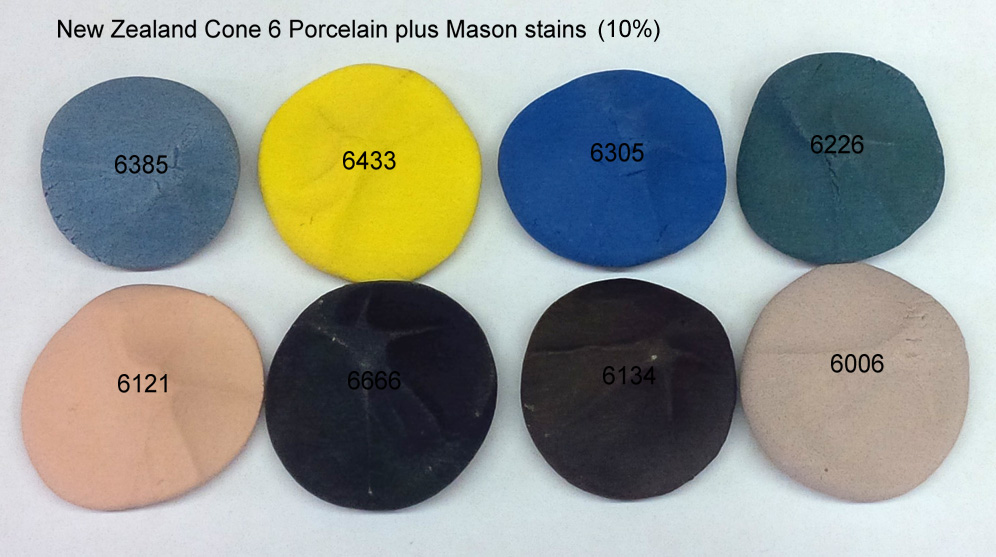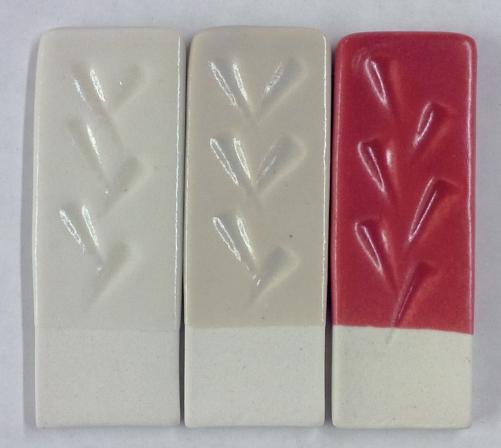Notes
Old number: 183
Related Information
Each Mason stain has its own personality for coloring the body

This picture has its own page with more detail, click here to see it.
These Mason stains make the porcelain more refractory, but some more so (e.g. 6385, 6226). Some do not develop the intended color (e.g. 6006 pink, it is a glaze stain only). Some need a higher concentration (e.g. 6121, 6385). Some need a lower concentration (e.g. 6134). Some do not impart a homogeneous color (e.g. 6385). The data sheets from the stain manufacturer normally make it clear which of their stains are suitable in bodies. But it is up to you to test concentrations needed to get the desired color and what adjustments to the porcelain are needed to compensate its degree of vitrification in response to the effects of the stain.
A glaze incompatible with chrome-tin stains (but great with inclusion stains)

This picture has its own page with more detail, click here to see it.
Left: A cone 6 matte glaze (G2934 with no colorant). Middle: 5% Mason 6006 chrome-tin red stain added. Right: 5% Mason 6021 encapsulated red stain added. Why is there absolutely no color in the center glaze? This host recipe does not have the needed chemistry to develop the #6006 chrome-tin color (Mason specifies 10% minimum CaO, this almost has enough at 9.8%, but it also has 5% MgO and that is killing the color). Yet this same glaze produces a good red with #6021 encapsulated stain at only 5% (using 20% or more encapsulated stain is not unusual - so achieving this color with only 5% is amazing).
Links











